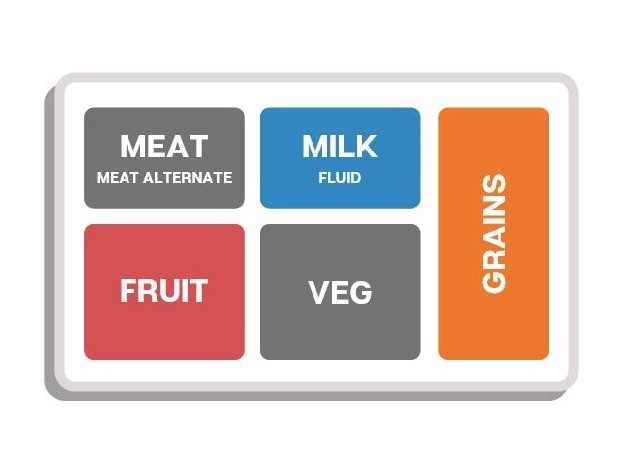What makes a reimbursable breakfast?

We recently reviewed what is needed for a meal to be reimbursable. In particular, we got into the details for school lunch. What makes a reimbursable breakfast?
Let’s start by looking at some of the differences between lunch and breakfast.
- As with lunch, breakfast can be straight serve or offer versus serve. However, offer versus serve is optional for high school breakfast instead of being required like at lunch.
- At lunch, all five food components must be offered. At breakfast, only three are required – fruit, milk, and grains. However, vegetables can be offered and credited as the fruit component. Also, meat/meat alternates can be served in place of a second grain option.
- There is one more important difference. Within the three food components that must be served at breakfast, four ITEMS must be offered. With OVS, students can decline one of the four items.
What is a food item compared to a food component?
A food item is a specific food that belongs to one of the food components.
Here are some examples:
- Fruit component: Blueberries, banana, orange
- Milk component: White milk, chocolate milk
- Grain component: Cereal, waffle, bagel
To make things a little more complicated, a single “item” that credits as 2 ounce-equivalents of grains can count as one or TWO “items.” This is up to menu planner. Cashiers and line servers should be aware of what the menu planner has decided each morning when serving or ringing up meals.
How do I recognize a reimbursable breakfast (under OVS)?
Just like lunch, there must be at least ½ cup of fruit and/or vegetable. There must also be at least 3 food items.
Here are some examples of reimbursable breakfasts:
- Muffin (2 ounce-equivalents grains) and 1 cup orange juice – The muffin can count as 1 or 2 items, and the OJ counts as one. If the menu planner has decided the muffin only counts as one item, this breakfast would only have 2 items. The student would need to take another item, like a milk, for the breakfast to be reimbursable.
- Waffles (1 ounce-equivalent grain each) with ½ cup berries and milk – Each waffle counts as 1 item. A student could take either 1 or 2 waffles along with the berries and milk. If they have 2 waffles, their breakfast would have 4 items.
- Yogurt with granola and ½ cup fruit – Yogurt is a meat/meat alternate that can credit as an additional grain item. Between the yogurt and granola, you have two items. The fruit is another item. That’s three items and you have at least ½ cup of fruit!
Ask yourself these three questions:
1. Is there a fruit or vegetable on the tray? If not, prompt the student to select a fruit and/or vegetable.
2. Is there at least 1/2 cup of fruit and/or vegetable on the tray? If not, prompt the student to take enough to reach 1/2 cup.
3. Are there 2 other items on the tray? If not, the student should select additional items so they have at least 3.


